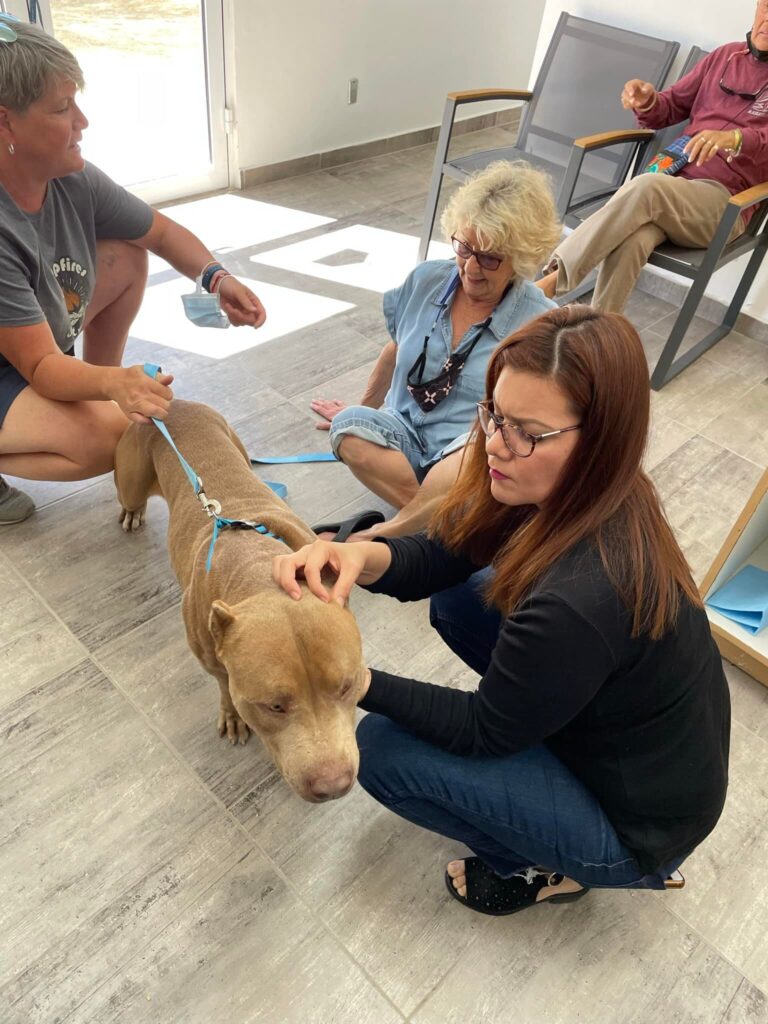Frequently Asked Questions
The word “spay” refers to the sterilization of female pets. Spaying a female dog or cat means removal of the ovaries, fallopian tubes, and uterus. This makes her unable to reproduce and eliminates her heat cycles and breeding related behaviors.
The term “neuter” refers to the castration of male pets. Neutering a male dog or cat means the removal of the testes. This makes him unable to reproduce and reduces or eliminates male breeding behaviors.
There is no medical evidence to substantiate any benefits to allowing a cat or dog to have a litter before spaying. In fact, spaying a female cat or dog before their first heat is much easier on your pet.
Dogs have outward signs of being in heat. The vulva swells, and there is bleeding present for 1 to 1 ½ weeks. Just after the bleeding stops, most dogs will be receptive to mating for 1 to 2 weeks. Most dogs will go into heat twice a year, in the spring and fall.
Cats go into heat for the first time typically when they are 5 to 7 months old. A cat will be in heat and receptive for mating for up to two weeks and then go out of heat. If the cat did not mate, two weeks later, she will go back into heat again. This cycle in and out of heat will continue for several months. Heat cycles for cats can occur twice a year, and cats will often at point in time escape outdoors to mate. Resulting in unwanted litter of kittens.
Getting your pet spayed or neutered will most likely not alter your pet’s basic personality. Is may result in some behavioral changes that improve your pet’s behavior. Pets may be less aggressive, more relaxed, and more focused on you. Freed from the urge to mate, cats and dogs tend to be calmer, and more content after surgery. A neutered dog protects his home and family just as well as an unneutered dog.
SNAP does not rescue, foster, or adopt dogs. Contact Cortez Rescue for more information about their availability to assist with dogs.
SNAP pays for the surgery for sterilization of cats and dogs that belong to Mexican community members. We do not pay for after care if there is complication, vaccinations, flea and tick medication, or other non-sterilization surgeries. Any additional costs must be approved by SNAP in consultation with the veterinarian.
Make sure your pet has a quiet and comfortable place to rest, away from other pets in the home if possible. Limit their activity to help keep them from rupturing the stitches. Prevent your pet from licking the wound, which can lead to infection. Check the wound site at least twice a day. If you notice increased redness, swelling or discharge contact the veterinarian and ask for advice.
Spaying and neutering your pet is currently the most effective birth control method for cats and dogs. By “fixing” your pet, you can help them live a happier, healthier, and longer life while not contributing to the homeless pet population.
The minimum age can be as young as 8 weeks. We recommend spaying and neutering by the age of 4 months. There is no age limit so long as your pet is healthy. Always consult with the veterinarian if you have more questions about whether it is the right time for your dog or cat.
The suggested time for animals that have recently given birth is about 2 weeks after the young have been weaned and the mother’s milk has dried up.
Even though spays and neuters are major surgical procedures, they are some of the most common procedures performed by veterinarians. Before the procedure, your pet is given a thorough physical examination. Just like any surgery, there are risks associated with surgical complications. Overall, these risks are extremely rare. During the spay and neuter surgery, cats and dogs are fully anesthetized, so they feel no pain. Afterwards, some animals seem to experience some discomfort, or they may not experience any discomfort. If concerns arise following surgery contact the veterinarian to discuss the concerns.
Spraying is common in unneutered male cats. This behavior is caused by the cat’s instinct to mark their territory. It is best to neuter male cats before they develop this tendency. It takes 6 to 8 weeks for the hormones to subside after neutering so you may not notice an immediate difference. Most people report their pets stop this behavior after being neutered.
SNAP does not rescue, foster, or adopt cats but you can help us keep the community cats under control. There are no formal car rescues in our immediate area. Contact us and we will provide you a loaner trap to capture the cat, information on how to get the cat fixed and after care instructions before releasing the cat back into the neighborhood. Because feral cats do not belong to anyone, we ask that if you can please provide a donation in exchange for this service.
Please contact SNAP directly and we can discuss your specific situation and make a determination if use of SNAP funds are appropriate.

